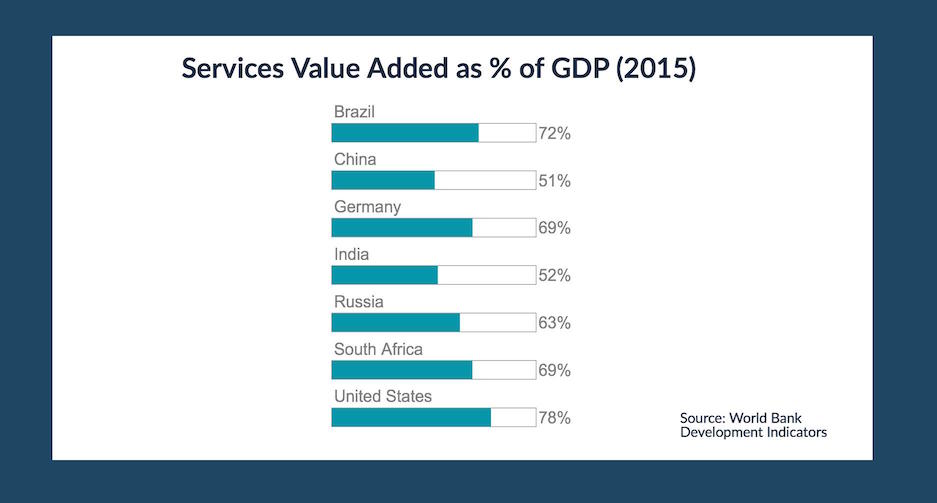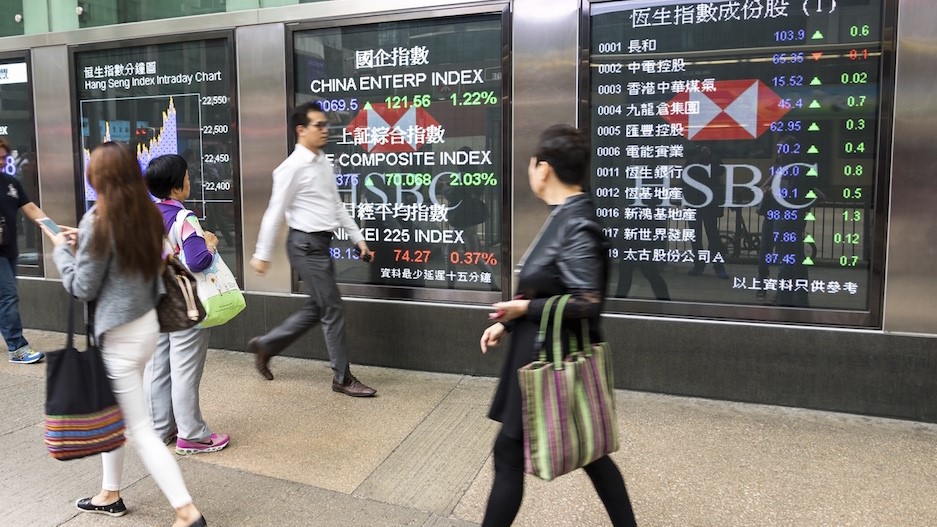Published 06 September 2016
Services represent just under 50% of gross domestic product in China compared with 63% in Russia, 70% in Brazil, and 52% in India. China could rebalance export oriented growth if it adopts a more open and transparent services economy.
Services represent just under 50% of gross domestic product in China compared with 63% in Russia, 70% in Brazil, and 52% in India. China could rebalance export oriented growth if it adopts a more open and transparent services economy. Domestic production of services in China is modest, yet China maintains restrictions on trade in services, making it difficult for global services providers to do business or grow their firms in China.
High quality services can transform the business environment while expanding the services economy. Efficient financial services governed by sound prudential regulations contribute to the qualified expansion of credit and a lower cost of borrowing. Insurance enables enterprises and individuals to mitigate risk and reduce exposure to unanticipated events. Accountancy adds rigor to corporate health as well as public sector accountability. Environmental services protect against air, water, and ground pollution. A reduction of trade barriers coupled with institutional and administrative transparency can boost these sectors.

What should China do grow its service industry?
Reduce Barriers to Foreign Service Providers
China’s 2001 accession to the World Trade Organization (WTO) included commitments to liberalize services spanning 93 service sectors. For example, China’s WTO Schedule of Specific Commitments allows the provision of online services in many sectors without limitations.
But after 15 years as a member of the WTO, China’s services economy remains restricted in significant ways and China maintains an opaque regulatory climate. Firms wishing to establish a presence in China must form joint ventures in most sectors. In 2015, China took steps to reduce restrictions on education, entertainment, financial, health, legal, and telecommunications under the Industry Catalogue for Foreign Investment but it can and must do more.

Increase Regulatory Transparency
As part of its commitments in the WTO, China assumed important transparency obligations including requirements to publish and make readily available laws and regulations pertaining to trade in services. China committed to allowing public comment on laws, regulations, or other measures bearing on trade in services. In addition to procedural and institutional transparency, many WTO members maintain domestic measures that emphasize access to accurate market information. For example, mandated corporate disclosure and survey requirements generate market information and quality economic data. Such practices create confidence in the marketplace.
China’s scores on the OECD Services Trade Restrictiveness Index indicate significant barriers in sectors such as legal, commercial banking, insurance, and accounting services.
Curtail the Dominance of State Owned Service Providers
State owned enterprises (SOEs) eclipse China’s services economy. While many WTO members have retooled competition authorities to reduce distortions in price, quality, and innovation in the services economy and increase penalties for anticompetitive practices, China’s SOEs continue to dominate in critical backbone industries such as finance, insurance, and telecommunications.
Services as a Balanced Source of Economic Growth
China should reduce trade restrictions on services by easing foreign equity share limitations, opening public procurement, and streamlining administrative procedures. China should fully implement transparency obligations and expand transparency practices to generate market information and quality economic data. Combined with a reboot of competition policy, China can build a diversified services economy that will contribute to balanced growth.
© The Hinrich Foundation. See our website Terms and conditions for our copyright and reprint policy. All statements of fact and the views, conclusions and recommendations expressed in this publication are the sole responsibility of the author(s).





